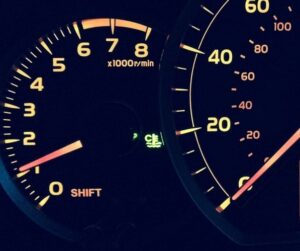Here we look more at what a slipping clutch means, the causes, and the fixes with costs.
As a general rule, clutch slip happens when the disc connecting your flywheel to your transmission fails to catch as effectively. This prevents your car from engaging the appropriate gears resulting in a revving engine and a loss of power.
The job of a clutch in a manual transmission car is to temporarily stop the power from an engine to allow the driver to move the gearstick into another gear.
Without a clutch, the gearbox would be engaged at the wrong engine speed causing the RPM to shoot up, destroying the gearbox.
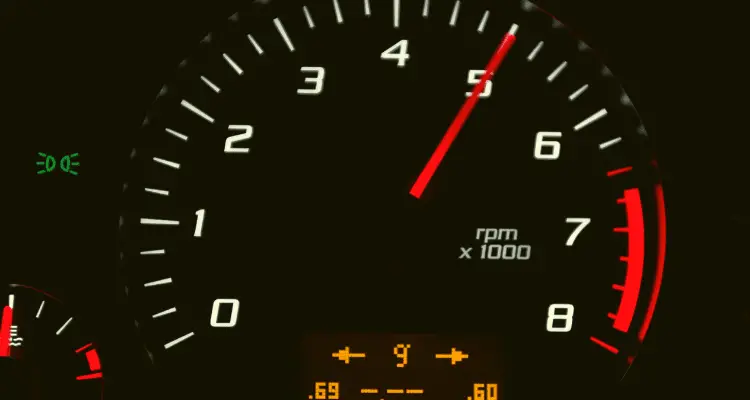
Your car changes gears millions of times throughout its lifetime. The clutch is called upon each time it happens to make that gear change happen. Being mechanical and made of metal, it does erode over time.
When this happens, the clutch slips.
It usually happens around 60,000 miles – but varies depending on the car’s driving during its life.
There are nine main signs your clutch is slipping.
Some symptoms will affect the pedal others will be smells and some noises.
We’ll explore them in more detail below.
Symptoms of a Slipping Clutch
1. Clutch Pedal Makes Noises When You Press and Release It
With the engine off, press the clutch pedal slowly and release slowly. Listen out for scraping noises. The noise you hear will be due to lubricant around the clutch fork dying out that allows it to rub.
A hissing noise indicates a different set of problems.
This is an early warning that your clutch is coming to the end of its life.

2. Clutch Pedal Chatters When You Accelerate
The clutch plates usually cause clutch chatter or jitters and the flywheel being out of alignment.
This often happens when the plate on the clutch is worn down badly and jerks when you accelerate.
It could also be that the slave cylinder or master cylinder needs replacing.
Sometimes oil or hydraulic fluid contamination on the press plate can cause the clutch to judder too.
3. Clutch Pedal Pulsates and Vibrates
The likely causes are that the disc lining has been worn away entirely and maybe down the screws holding it in place – especially if there is a burning smell.
Your clutch really is close to breaking completely, so it’s time to get it booked in with a mechanic.
4. Clutch Pedal Is Loose.
If your clutch pedal is loose and you’ve had no other symptoms in this list, it may be that the clutch cable has snapped.
The clutch cable is a steel braided cable that links the pedal to the clutch linkage.
A clutch cable costs $75 – $125 to replace, including labor.
This is good news as it could mean the rest of your clutch is in good condition and may be good for thousands of more miles.
5. Clutch Pedal Is Soft and Spongy
If your clutch pedal feels less resistant than when you usually push your foot down, this is called a spongy clutch pedal.
It’s worth checking the fluid level under the hood as if the clutch fluid is below the minimum mark; a top-up may fix the problem.
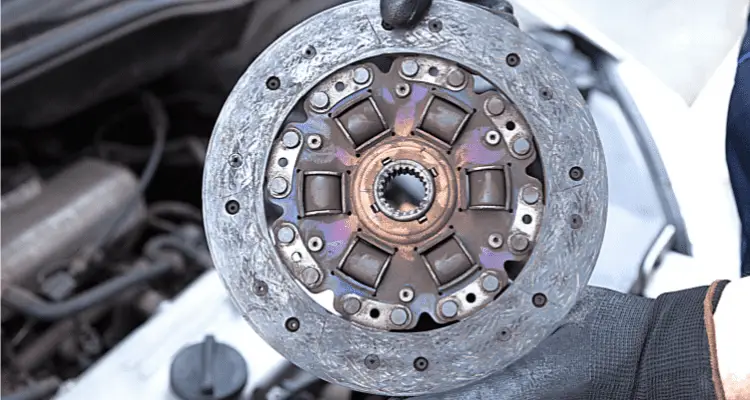
If the level is low, your enslaver or slave cylinder may leak and need replacing. It’s worth – before you take it to a mechanic – topping up and looking for leaks in the lines.
6. Clutch Pedal is Hard to Push Down
If your clutch pedal feels harder to push down, there are three main reasons.
- The pedal linkage is sticking or rubbing against the side of its housing.
- There’s an airlock in the hydraulic system, or the seals are worn
- As per the soft pedal, a bad master or slave cylinder isn’t pumping enough fluid to the clutch plate to release the pedal.
7. Grinding Noise When Shifting Gears
Check the clutch fluid level under the hood to start with. If this level is good, then there is likely to be a fault with the flywheel in the clutch as it tries to engage the plate smoothly.
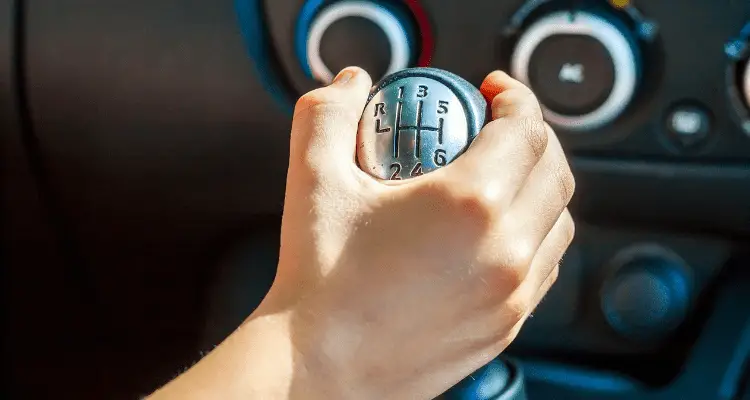
The flywheel is expensive to replace and isn’t always part of the standard clutch kit people often buy.
Car Making A Grinding Noise When You Accelerate? Fixes and Costs
It sits between the transmission and the clutch itself and is, therefore, isn’t technically a standalone item. Sometimes flywheels can be reconditioned, saving on the total replacement cost.
8. A Burning Smell
A sure sign that your clutch is slipping is if you smell burning rubber in a line of cars in a queue.
Often you’ll have to engage the clutch to move your car for a short distance before going into neutral when the line stops again.

This regular stop and start engages and disengages the clutch and will bring any problems to the surface.
This doesn’t mean that your clutch is slipping, but it’s more of a sign that you may be keeping the clutch engaged -riding the clutch- rather than putting the car into neutral when stopping.
Stopping and starting in a line of cars while driving up a hill will make your clutch work much harder.
It s always best to put the car in neutral when you can.
9. High Revs
If you accelerate and the rev counter shows an increase in your RPM, take a glance at your speedometer.
Is your speed increasing as well? If not, this is a sure sign that your clutch is slipping.
Your engine is not engaging the flywheel and the pressure plate to turn the transmission as you requested.
What should I do if my clutch is slipping?
Firstly check the clutch fluid level. If low, top it up to the max level. Check for leaks in the lines too. If you’re sure that a leak isn’t causing the slipping, it’s time to get your car to a mechanic.
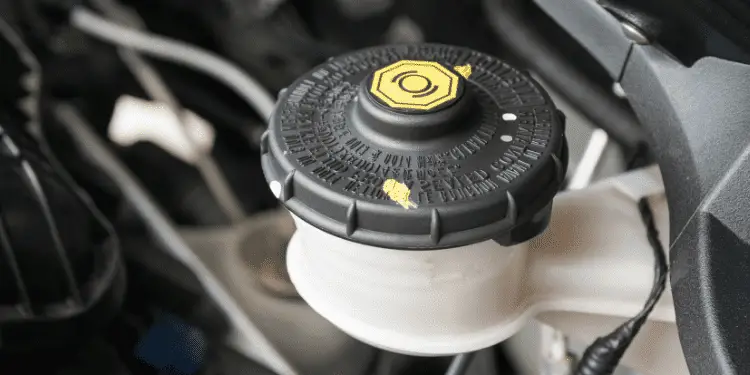
A mechanic will check the enslaver and enslaved person cylinder and the clutch itself to see what is causing the issue.
The costs of fixing a slipping clutch vary with what exact parts need replacing.
- A master and slave cylinder replacement is cheaper than a total clutch replacement.
- The cost to replace a clutch is between $600 to $2,000. The clutch kit costs range from $300 to $950, and labor costs are between $300 and $1,000.
- The total replacement cost of a master cylinder is between $300 – $450. Expect to pay between $175 and $280 for the part and $125 to $225 in labor costs.
- The average cost to replace a clutch slave cylinder is between $200 and $350. Labor costs are estimated between $100 and $175, while parts are priced between $95 and $175.
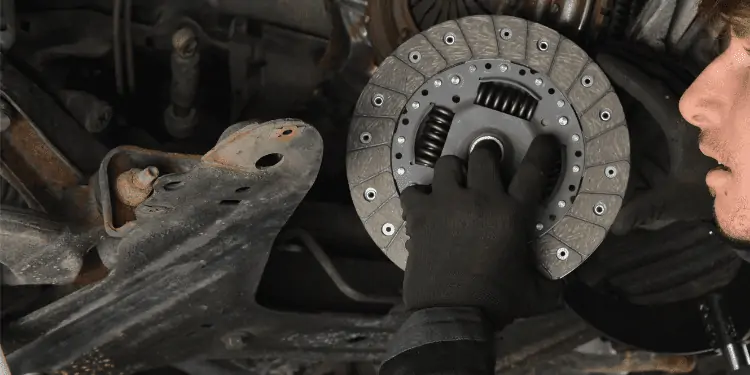
How Many Miles Should a Clutch Last?
Clutches fitted in cars that are mostly highway driving will last longer than clutches in vehicles used around town.
Each time a gear change occurs, the clutch plate will lose a minute piece of its lining. The fewer gear changes per mile, the more miles the clutch will last.
Other factors such as not engaging neutral when stopped and hill starts will also cut short a clutches lifespan.
Can you DIY Fix a Slipping Clutch?
Although it’s possible to change a clutch yourself, it can be challenging.
Expect to have to
- Jack the car up – Secure it with stands or ramps.
- Remove bolts for the gear shift and the transmission
- Support the transmission – it’s heavy- once you’ve unbolted it
- Drain the hydraulic fluid away
- Replace the clutch – Not too complicated, and then do everything above in reverse.
Expect it to take 3 hours +. If you haven’t fitted the clutch correctly, there’s no way of knowing until you’ve put everything back together again.
Most people will call a mechanic or take the car to a car shop where the problem can be diagnosed and the correct parts fitted.
In Conclusion
- Don’t assume the clutch is slipping. Check fluid levels and for leaks first.
- A burning smell may be because the clutch is being ridden rather than the transmission being placed in neutral in a line of traffic. It may still have some life in it, but it was getting hot.
- It could be the slave cylinder or master cylinder are bad and not the clutch.
- Although trying the repair yourself is tempting, it is a heavy and dirty job. You’ll have to lift both sides of the car, drain fluid, and top up, and you won’t know if the repair has worked until everything is put back on the car and it’s taken for a drive.


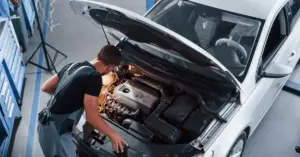

![Should You Rev Match When Downshifting? [The Truth] Shutterstock_1068955487-1](https://carzaza.com/wp-content/uploads/2023/12/Shutterstock_1068955487-1-300x157.png)

